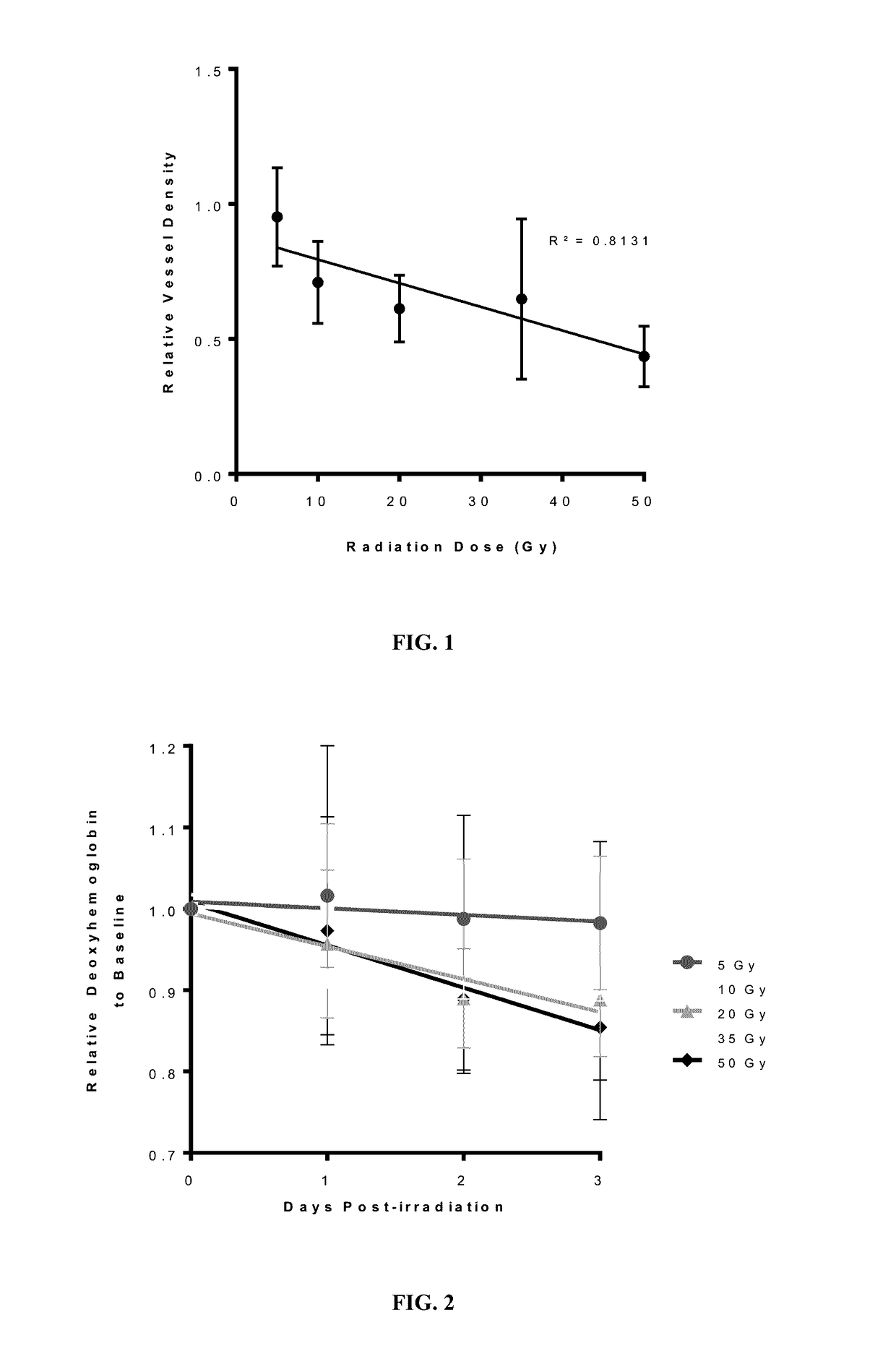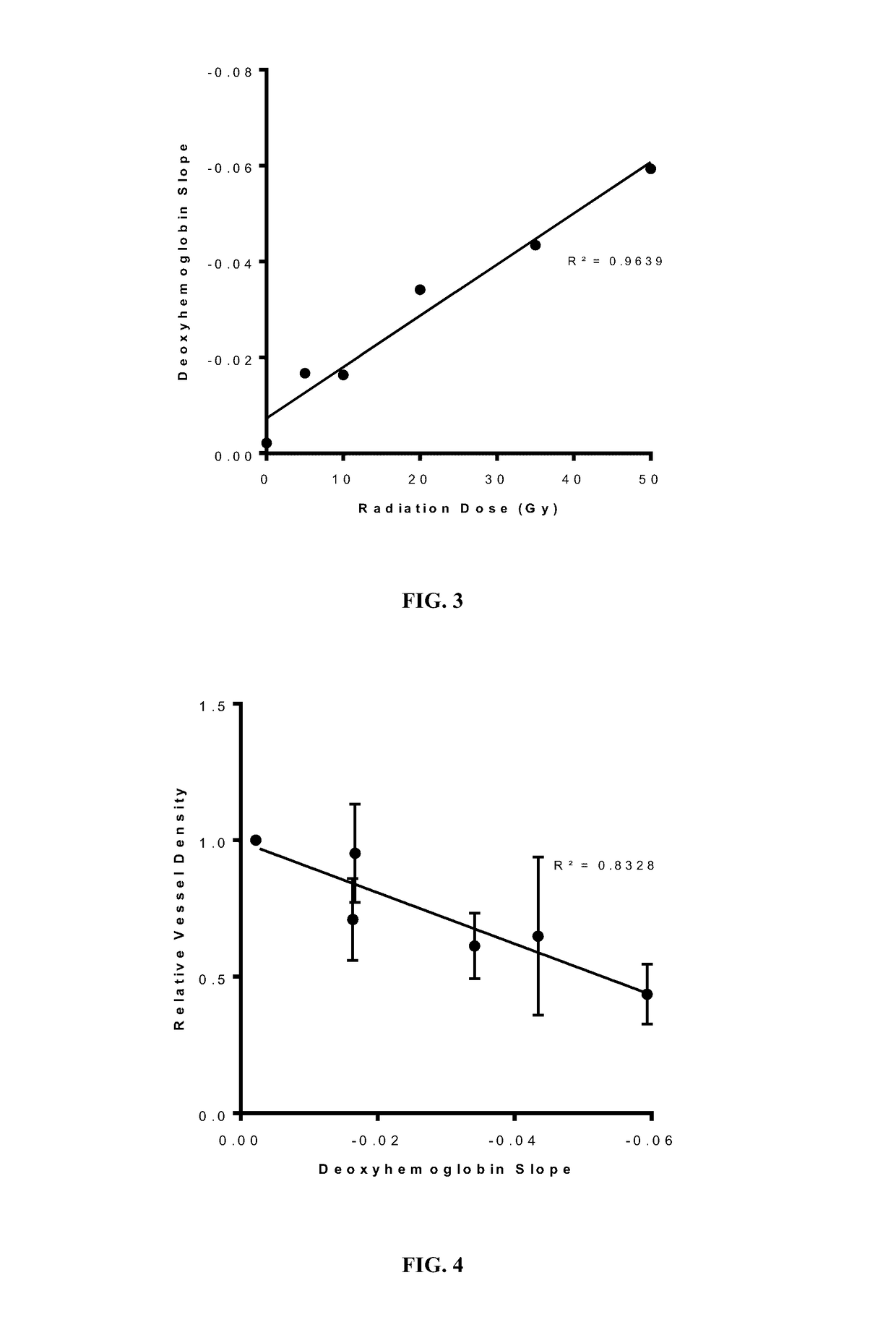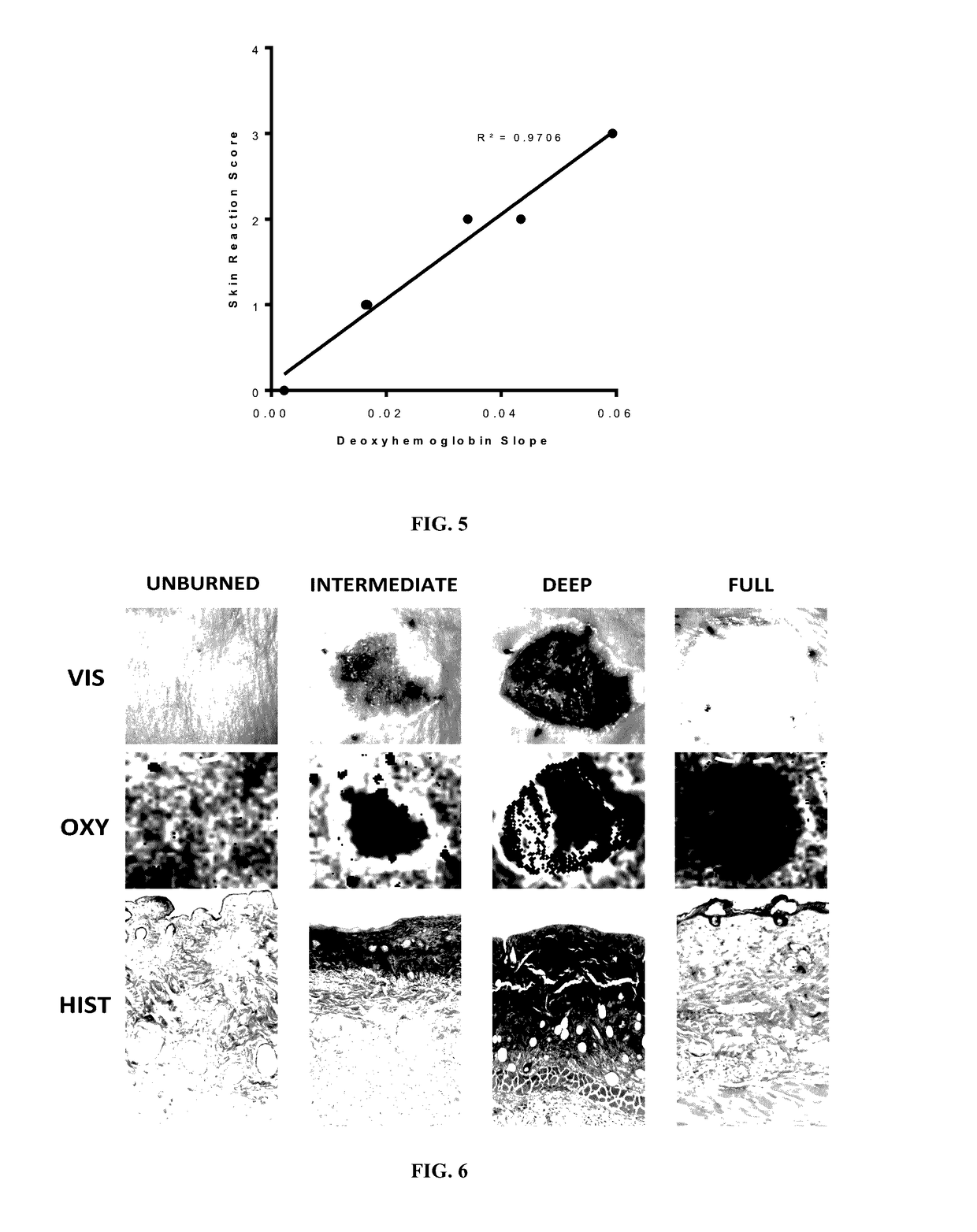Hyperspectral imaging for prediction of skin injury after exposure to thermal energy or ionizing radiation
a technology of ionizing radiation and hyperspectral imaging, which is applied in the direction of spectroscopy, instruments, applications, etc., can solve the problems of increased infection risk, prolonged hospitalization, early differentiation of superficial versus deep dermal burns, etc., and achieves rapid identification and effective, efficient and non-invasive detection.
- Summary
- Abstract
- Description
- Claims
- Application Information
AI Technical Summary
Benefits of technology
Problems solved by technology
Method used
Image
Examples
example 1
Hyperspectral Imaging as an Early Biomarker for Radiation Exposure and Microcirculatory Damage
[0073]The study demonstrates that early measurement of cutaneous deoxygenated hemoglobin levels after radiation exposure is a useful biomarker for dose reconstruction and also for chronic microvascular injury. Changes in deoxygenated hemoglobin can also be correlated to acute skin reactions before any are visible.
Animals and Irradiation Procedure
[0074]All handling of and procedures performed with animals was done in accordance with a protocol (UMass IACUC Protocol #A2354) approved by our Institutional Animal Care and Use Committee. Prior to this experiment, a model of acute radiation-induced skin injury was established. (Chin, et al. 2012 J. Biomedical Optics 17(2):026010.) The radiation source utilized was a Strontium-90 beta-emitter with an active diameter of 9 mm, which created an 8 mm diameter skin injury. This beta-emitter source delivers less than 10% of the total dose deeper than 3.6...
example 2
Hyperspectral Imaging as an Early Prediction of Maximal Burn Depth After Thermal Injury
[0092]This example was to characterize dermal perfusion and oxygenation in three sequential depths of burn over a dynamic, three-day period after burn injury, and to assess whether vsHSI could differentiate depths of injury, based on any of the parameters it quantifies: oxyHb, deoxyHb, tHb, or StO2.
Animals and Thermal Burn Procedure
[0093]All handling of and procedures performed with animals was done in accordance with a protocol (UMass IACUC Protocol #A2454) approved by our Institutional Animal Care and Use Committee.
[0094]One hundred and seven hairless immune-competent, adult male mice (SKH-1 Elite, Charles River Laboratories, Wilmington, Mass.) were used. Anesthesia for thermal burn procedure and imaging was performed with a mixture of ketamine (55 mg / kg) and xylazine (5 mg / kg). Tattoo marks were placed on the dorsum of the mice to act as fiducial marks. After anesthesia, the dorsal skin was dis...
PUM
 Login to View More
Login to View More Abstract
Description
Claims
Application Information
 Login to View More
Login to View More - R&D
- Intellectual Property
- Life Sciences
- Materials
- Tech Scout
- Unparalleled Data Quality
- Higher Quality Content
- 60% Fewer Hallucinations
Browse by: Latest US Patents, China's latest patents, Technical Efficacy Thesaurus, Application Domain, Technology Topic, Popular Technical Reports.
© 2025 PatSnap. All rights reserved.Legal|Privacy policy|Modern Slavery Act Transparency Statement|Sitemap|About US| Contact US: help@patsnap.com



